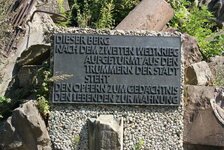33k in the air
Staff Sergeant
- 1,356
- Jan 31, 2021
Disregarding Speer, whose memoirs are indeed self-serving, the fact is that by autumn 1944 Pointblank had reduced German fuel production/distribution by 90 or so per cent, discombobulated the rail system such that vital materials were impeded from being shipped to vital factories, and so on.
Let's put a visual representation to that. Below is a graph of the monthly overall armaments index value compiled by Speers' armaments ministry and as published in Adam Tooze's The Wages of Destruction. The months shaded in red are the ones in which Bomber Command waged its campaign against the Ruhr.
Notice that the index was increasing sharply prior to the Ruhr battle, then flattens out considerably. It fluctuates up and down but exhibits no sustained growth for seven months following the campaign. Sustained growth doesn't start again until March.1944. The index peaks in July 1944 and falls off rapidly after that.
By October 1944 the index had dropped to what it had been in April of that year. In January 1945 the index had fallen to below what it had been in Feb. 1944, meaning all the production gained in that year had been wiped out.






